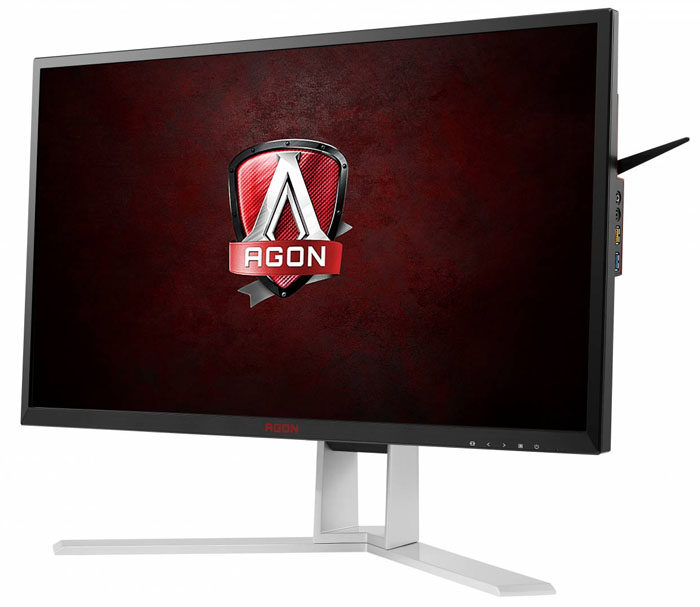Early Verdict
G-Sync looks likely to remain a stalwart of premium gaming displays for at least the near future. The AG271QG offers a full feature set and excellent performance for the money, especially when compared to the high-end offerings from enthusiast-catering companies like Asus and Acer. AOC has always been about value, and by packing its Agon products with every conceivable feature it has positioned its screens very competitively. With a few tweaks in the OSD, the QG provides an excellent image worthy of any high-end gaming system. Gaming performance is beyond reproach making it a compelling choice.
Pros
- +
IPS panel
- +
Color accurate with calibration
- +
G-Sync
- +
165Hz refresh rate
- +
ULMB
- +
All-metal stand
Cons
- -
Contrast
- -
Out-of-box accuracy
- -
No OSD controller
- -
Expensive
Why you can trust Tom's Hardware
Introduction
AOC made a bold introduction of its new line of premium-branded gaming monitors called Agon just recently. We’ve already reviewed the excellent AG271QX, a 27-inch screen with Freesync that works over a wide 30-144Hz range. Our only wish? That it was an IPS panel. That dream can come true for Nvidia GPU customers with the companion to that display, the AG271QG. Not only do you get IPS at QHD resolution, it runs at 165Hz and offers G-Sync and ULMB along with high-end build quality and slick styling.
Some users are in the position of being able to choose which adaptive refresh technology they’d like to commit to. Perhaps they haven’t decided on a particular video card or they’re looking for a change and embarking on a new system build. We’ve mentioned the price differential in nearly every review we’ve written in the past two years. A display supporting Nvidia’s G-Sync will cost you about $200 more for roughly the same feature list. FreeSync can offer great performance but you have to watch the operating range closely. Some screens switch out of adaptive-sync mode below 40 or as much as 50Hz. This can impact quality when a particular game/graphics card combination can’t sustain framerates above that number.
G-Sync monitors always work from 30Hz up to their maximum refresh rate. In the case of today’s review subject, that’s a huge range of 30 to 165Hz once you engage the overclock. G-Sync is also more common in premium monitors and that makes it more likely you’ll find an IPS panel in the more expensive products. AOC’s new AG271QG meets that goal. Yes, it costs about $200 more than its FreeSync counterpart, the AG271QX. But in addition to G-Sync, you get blur-reduction, an IPS screen, and a higher 165Hz refresh rate.
Is there anything missing here? The OSD controller is the most notable omission. We loved the multi-function part included with the QX. You also get fewer inputs, only one each of HDMI and DisplayPort. The HDMI port is version 2.0 compatible though, something we have only seen on a few displays thus far.
So if you’re leaning towards Nvidia on your next build, or if you already have a G-Sync-ready graphics board, the AG271QG might be worth considering. Let’s take a look.
Packaging, Physical Layout & Accessories
The carton is substantial and protects its contents with two large foam blocks, sandwich style. The panel, upright, and base are separate and must be assembled. The latter two parts mate with a captive bolt. To attach the panel, find the four black screws taped to the upright’s plastic bag. They’re treated with blue Loctite so a little extra torque is necessary to snug them up.
The power supply is a large external brick with its own detachable power cord. Video cables include good quality HDMI and DisplayPort wires. You also get analog audio and USB 3.0 cables. There is no CD. Any documentation beyond the printed quick start guide will have to be downloaded from AOC’s website.
Get Tom's Hardware's best news and in-depth reviews, straight to your inbox.
Product 360
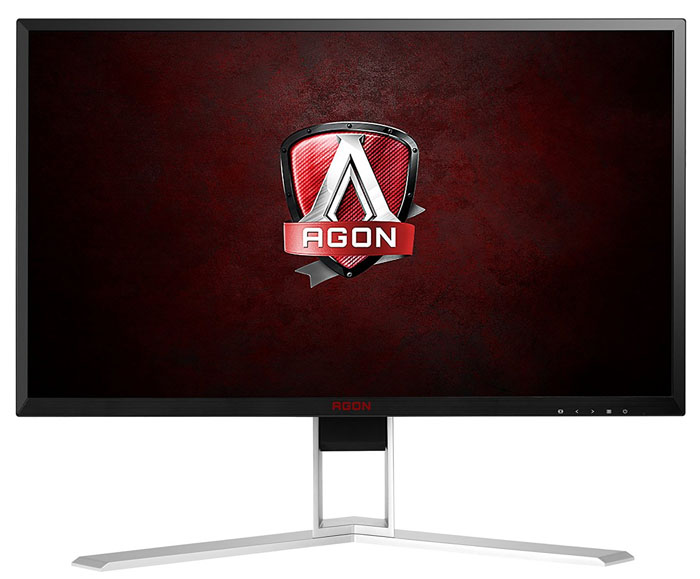
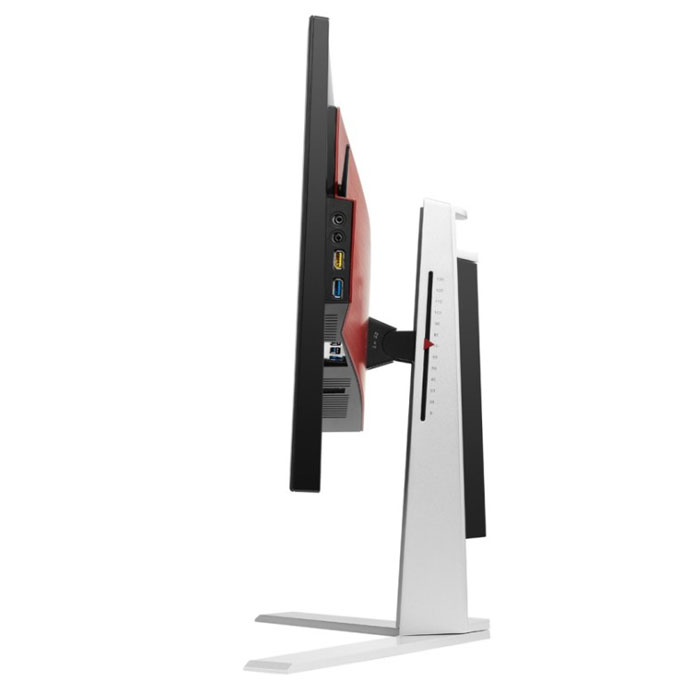
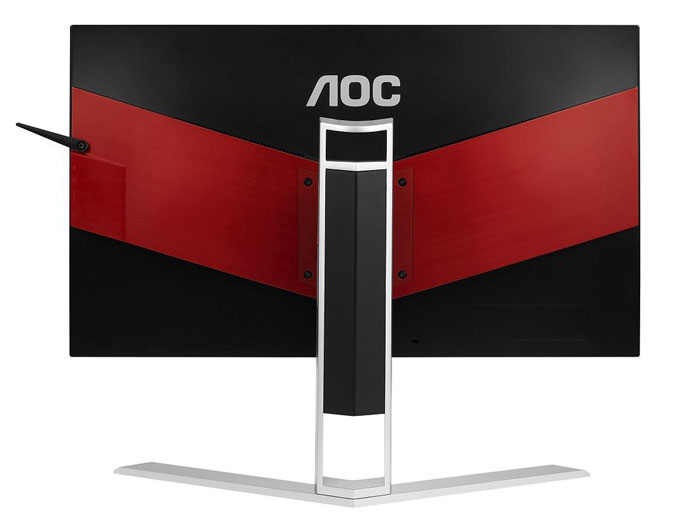
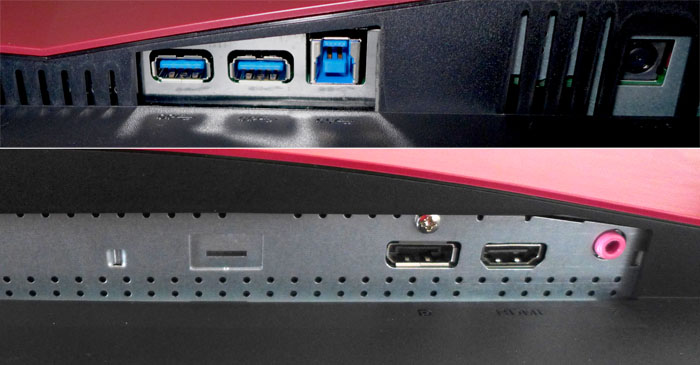
If you put an AG271QX and AG271QG next to each other, you won’t be able to tell them apart. Physically, they are identical. The QG has the same solid-aluminum stand with its satin finish and solid workings. Movements are firm and precise. The height adjustment ranges over 5¼" and there is a portrait mode. Swivel is modest at just 20° in each direction. Tilt is also 20° back and 5° forward.
We missed the cool OSD controller found in the AG271QX but had little trouble mastering the QG’s buttons arranged beneath the right lower bezel. They click with a quality feel and are very responsive. The bezel is very narrow at just 11mm around the top and sides.
The side input panel features two USB ports, one of which remains powered during standby to facilitate charging. Also there's a headphone output and a microphone input, perfect for combo headsets. You can see in the photo that the upright features tick marks and a sliding pointer so you can easily recall position adjustments when transporting the monitor from place to place.
AOC’s Agon-specific styling is most apparent across the back where a large red chevron is featured against a textured black background. The red plastic is also finished with a brushed-metal look. The upright can be removed to access a 100mm VESA mount. The lugs are recessed so a metal bracket is included in the box that brings the mounting surface out flush. It attaches with its own hardware which is also included.
The input panel, like all G-Sync monitors, includes just one DisplayPort and one HDMI jack. The latter is 2.0 compatible and its support level can be changed in the OSD in case your video card requires an older version. Also there's a microphone output that links to your PC’s mic input to transmit your voice into the cloud, or the gaming world as it were.
MORE: Best Gaming Monitors
MORE: Best Professional Monitors
MORE: How We Test Monitors
MORE: How To Choose A Monitor
MORE: All Monitor Content

Christian Eberle is a Contributing Editor for Tom's Hardware US. He's a veteran reviewer of A/V equipment, specializing in monitors. Christian began his obsession with tech when he built his first PC in 1991, a 286 running DOS 3.0 at a blazing 12MHz. In 2006, he undertook training from the Imaging Science Foundation in video calibration and testing and thus started a passion for precise imaging that persists to this day. He is also a professional musician with a degree from the New England Conservatory as a classical bassoonist which he used to good effect as a performer with the West Point Army Band from 1987 to 2013. He enjoys watching movies and listening to high-end audio in his custom-built home theater and can be seen riding trails near his home on a race-ready ICE VTX recumbent trike. Christian enjoys the endless summer in Florida where he lives with his wife and Chihuahua and plays with orchestras around the state.
-
dstarr3 I appreciate the slightly more grown-up look to this. All the Acer and ASUS gaming monitors look dressed up for 12-year-olds and I'm not going to pay nearly $1k for the privilege of putting those horribly gaudy things on my desk. So this is an improvement. I think I'd still rather have the Dell S2716DG, though. Or at least something that looks like it.Reply -
beshonk How come we haven't seen a review or mention of the viewsonic xg2703? I have that monitor and it is perfect. The price is right and the stand doesn't look gamey like the Acer and Asus.Reply -
Bradley Coates I would also like to see a review of the Viewsonic XG2703. It uses the same panel as this AOC does, but has better on-screen menu.Reply -
ubercake Just curious... Why does the PG279Q contrast ratio look so different in this review compared to its own review?:Reply
http://www.tomshardware.com/reviews/asus-pg279q-rog-swift-27-inch-165hz-monitor,4428-4.html
ANSI versus other method of contrast measurement? -
WyomingKnott What's the thing on the back that looks like an antenna sticking out? Black, about halfway up the right side (left side in the back view)?Reply
